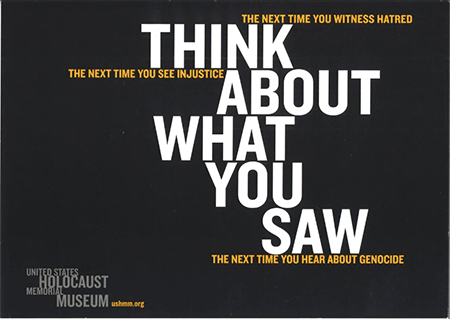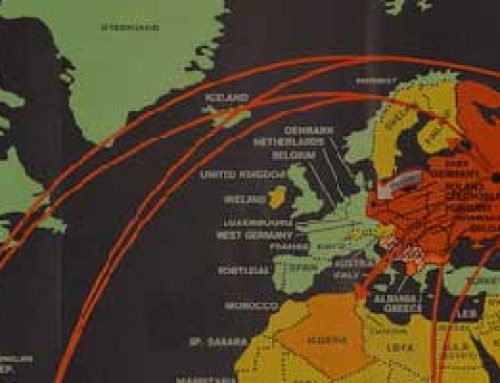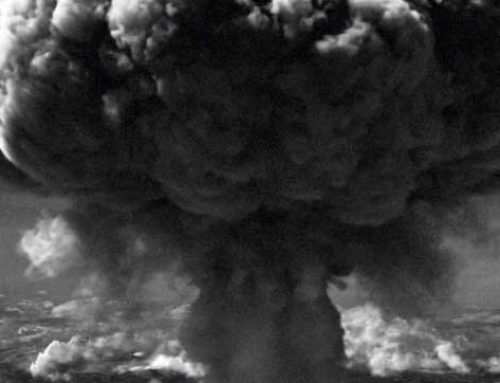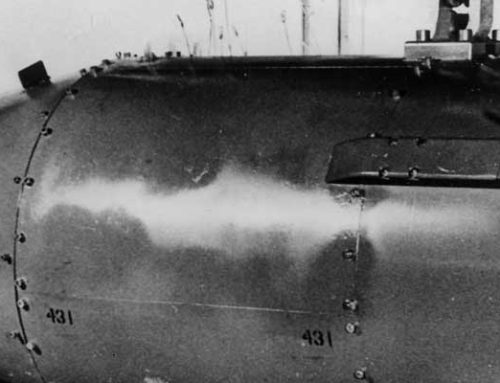When the Nazi party took control of Germany, people who did not fit Adolf Hitler’s view of the perfect Aryan German race faced discrimination. Targets included Slavs, the Roma (Gypsy), gay people, mentally handicapped people, and others. But Hitler and the Nazi party has particular enmity for Jews.
On November 9, 1938, the world got its first glimpse of the terror ahead for Jews in Germany. German gangs attacked and burned synagogues and Jewish businesses throughout Germany. Jewish hospitals, homes, schools, and cemeteries were also vandalized. The night became known as Kristallnacht or the “night of the broken glass.” Some 30,000 Jews were arrested and placed in prisons called concentration camps.
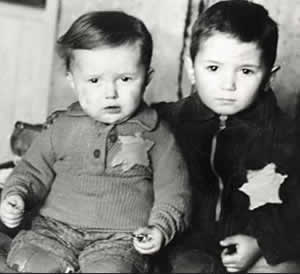
Jewish_children_Holocaust
The German government first introduced mandatory badges in Poland in November 1939. Jews who failed to wear them risked death.
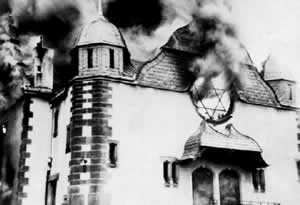
A Jewish synagogue set on fire in Nazi Germany
The Nazis used the concentration camps for many atrocities. Camp prisoners were used as slave laborers and were often worked to death. The Nazis conducted cruel medical experiments without using anesthesia.
In time, the Nazis adopted a policy of genocide, the deliberate and systematic extermination of a group of people based on their race, religion, or culture. The concentration camps became death camps with gas chambers for mass killings. Many prisoners were forced to dig their graves. Once the graves were dug, the prisoners were shot. Those who survived the shooting were buried alive. Other prisoners were starved to death or died from lack of medical care. One of the cruelest atrocities involved “showers.” Men, women, and children were stripped of their clothing and herded into a large room, expecting to be showered with water. Instead, poison gas filled the room, causing a cruel, painful death. The bodies were then removed and cremated.
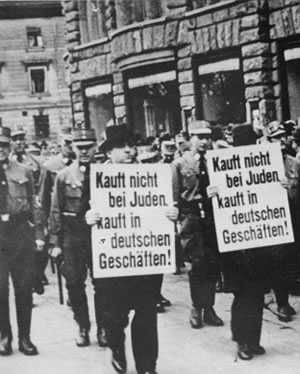
Boycott
Jewish businessmen are forced to march down a crowded Leipzig street while carrying signs reading: “Don’t buy from Jews. Shop in German businesses!” Leipzig, Germany, 1935.
Altogether, as many as six million Jews and five million others perished in what became known as the Holocaust. After the war, the Allied Powers convicted the Nazi leaders of “crimes against humanity” for their atrocities. The few survivors of the Holocaust have implored the world never to let the world forget the tragedy for the Jewish people or any people. More than half a century after the Holocaust, institutions, memorials, and museums continue to teach the history of the Holocaust to future generations.
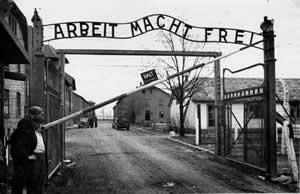
Arbeit_mach_frei
The gate leading to the Auschwitz concentration camp in what is now Oświęcim, Poland. "Arbeit macht frei" is a German phrase meaning "work makes you free." The Nazis placed the slogan over the entrances to a number of Nazi concentration camps during World War II.
Resources
Download this lesson as Microsoft Word file or as an Adobe Acrobat file.
Mr. Donn has an excellent website that includes a section on World War I and World War II.

